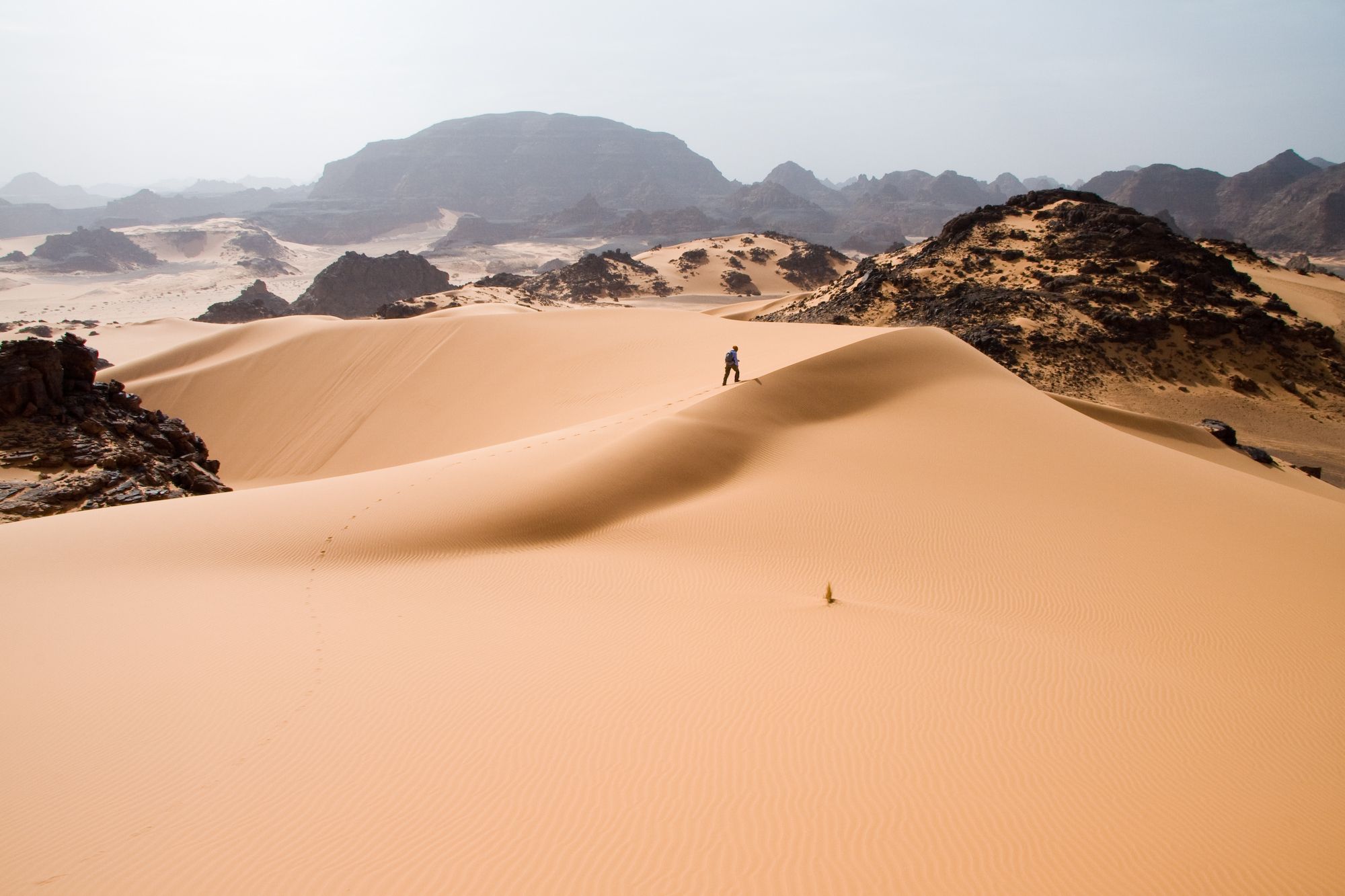Parts of the Sahara receive less than an inch of rain per year. A University of Maryland-led study recently published in Science magazine shows humans might be able to change that.
Wind and solar farms could more than double rainfall in the desert, and increase it by up to about 20 inches in the Sahel region of Africa, university scientists found.
Using a climate model, the scientists showed that solar panels could increase rainfall by reducing the ground’s reflectivity, which is how much the sun reflects off the earth. This reduction increases the warmth of the surface, which warms the air above it and causes it to move upward. This upward motion then forms clouds and increases precipitation.
“A climate model is an ocean, land, atmosphere and radiation model all combined that can reproduce the past climate, and it can change the physics or the biology of the planet or the chemistry of the atmosphere,” said Russell Dickerson, an atmospheric and oceanic science professor at this university. “Then you can predict and forecast what impact that will have on future climates.”
Wind turbines can also increase rainfall in a way similar to solar panels, said Eviatar Bach, one of the study’s co-authors and a doctoral candidate in this university’s atmospheric and oceanic science department.
“The wind farms increase the friction at the surface, which also increases upward motion by increasing the convergence of the air,” Bach said. “What normally happens is the air goes around in circles due to the rotation of the earth, but this causes it to slow down and converge, which forces the air upwards and causes precipitation.”
[Read more: UMD students designed a solar-powered house. It’s been sitting unbuilt for a year.]
The increased rainfall would also increase vegetation. According to the study, this would further decrease the reflectivity of the Sahara’s surface and again, increase rainfall.
The drastic change in weather would also mean changes for the surrounding region.
“The Sahel region has gone through multiple droughts throughout the 20th century and more recently. There are problems with fresh water availability so that would be a major positive impact,” Bach said. “There would be water for irrigation for agriculture and the electricity generated by the solar and wind farms could also be used for sanitation of water.”
Alexandra Campson, a freshman enrolled in letters and sciences, was concerned about how increased rainfall would alter the environment.
“It’s a desert, so increasing the rainfall could completely affect all the succulents and cacti and other animals living there,” Campson said. “It will affect the growth of the vegetation because the organisms in the desert are adapted to not having a lot of rain.”
[Read more: This UMD invention will use lasers to aid the fight against climate change]
But that might not necessarily be a bad thing, Dickerson said.
“Right now, the vegetation in the Sahara is pretty minimal. There isn’t much that can live there. And [the desert’s] growing — that’s the real problem,” Dickerson said. “It’s very possibly growing because of man’s activities, so the desert gets bigger. This could help turn it to its natural state.”
The Sahara was lush and green 10,000 years ago, Dickerson said, and its shift to desert is largely credited to human interference.
Other students wondered how the study could apply to the United States. Madelyn Harris, a freshman African-American studies and sociology major, noted it might be helpful in California.
“You hear about the California drought in the news so much,” she said. “They don’t get enough rain. I’m sure if it works in the Sahara, it could work there, too.”
Dickerson acknowledged it could be possible, but not necessarily feasible.
“The physics is the same — you cover a large chunk of American deserts you might change the weather patterns there as well,” Dickerson said. “However, land in the Sahara is cheap, but land in California is not.”
The study was published in September after being submitted for multiple rounds of reviews last November.



